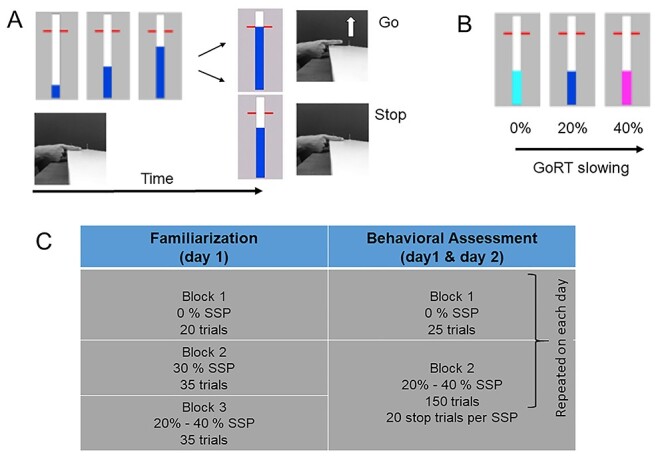Figure 1 .

Behavioral task and experimental protocol. (A) Stop-signal task: participants had to rest their right index finger on a switch (see also Hermans et al. 2018). On a computer screen, a bar started to fill at a constant and equal rate, crossing a horizontal target line at 800 ms. In “go” trials, participants had to stop the indicator as close as possible to the red target. In “stop” trials, the bar would stop filling before it reached the target line. Participants had to cancel the movement of lifting their finger/releasing the switch. (B) The color of the bar was light blue, dark blue, or magenta for the 0%, 20% and 40% stop-signal probability, respectively. (C) Experimental protocol consisted of familiarization session (day 1) and two behavioral assessment sessions on separate days, with at least 48 h in between sessions (see text for details).
